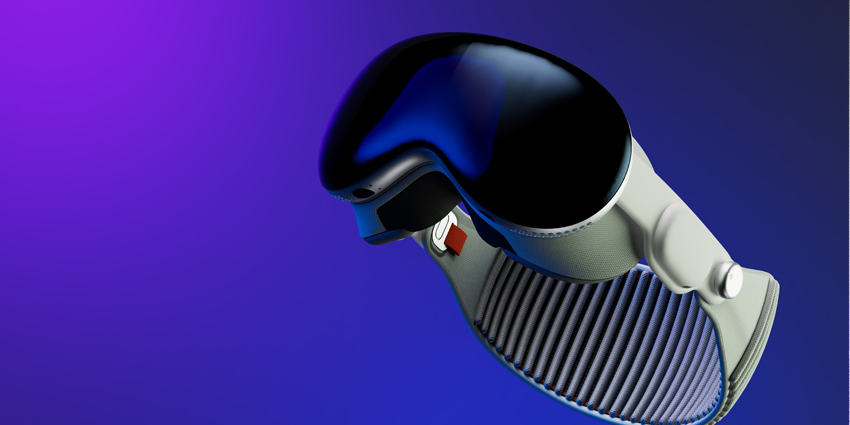Augmented reality (AR) has come a long way in recent years, according to the latest statistics. Today, AR is one of the most popular forms of immersive technology, with companies investing in apps and experiences every day.
With the right technologies, organisations can build immersive AR training experiences, enhance collaboration, and improve customer experiences.
According to the latest reports by industry analysts like Market Research Future, the augmented reality market is flourishing, growing at a faster rate than nearly any other disruptive technology. To date, the AR space is set to grow at a compound annual growth rate (CAGR) of around 41.5 percent at $461.25 billion up to 2030.
Analysts believe the AR space’s rapid transformation results from quickly evolving tools and technologies in the immersive landscape. New software solutions for building AR experiences and more advanced cameras and screens have accelerated AR’s development.
Here is a closer look at the statistics highlighting the innovative solutions that are reshaping the world today.
The Rise of Augmented Reality: Top AR Facts in 2023
Augmented reality currently stands as one of the most exciting and disruptive technology solutions for business leaders across industry verticals. According to a 2022 Snapchat and Ipsos MORI report, AR is emerging as a powerful tool for companies looking to engage with their target audience.
Around 94 percent of business leaders say “fun” is the main reason people use AR.
However, the report also found that consumers have different opinions about what makes AR compelling. For example, around 55 percent of UK consumers believed AR’s biggest benefit is that it helps with their shopping experiences.
79 percent of consumers showed interest in using AR to place products in their environment to see how they might look before buying them. Additionally, 77 percent of consumers indicated interest in using AR to interact with products before buying them.
Key Statistics in AR for 2023
- 57 percent of users say they’re more likely to buy from a brand offering AR: Customers are more likely to purchase products from a company that offers immersive AR experience. According to the Snap report mentioned above, around 64% of consumers believe the ability to use AR in their shopping experience increases their sense of loyalty towards a brand.
- Revenues for AR/VR displays totalled $942 million in 2022: According to a Display Supply Chain market report, 2022 was a challenging year for the AR/VR technologies segment. However, the landscape is still expected to grow significantly in the years ahead. Industry revenues are set to accelerate by a CAGR of 50.7 percent by the end of 2027.
- By the end of 2023, there will be 1.4 billion AR device users: Statistica reported the number of AR device users had increased steadily over the last few years. There were approximately 1.07 billion AR device users by the end of 2022. By 2023, this number is set to increase to 1.4 billion and to 1.73 billion in 2024.
More Figures on the Global AR Industry
- The AR/VR headset market is expected to ship around 50 million units by 2026: Although the shipments of AR/VR devices reduced slightly in 2022 due to supply chain issues, the COVID-19 pandemic, and other economic problems, experts believe shipments will begin to increase again from 2023. IDC suggests that by 2024, the shipments of AR devices will have increased by 88.86 percent year-over-year.
- The market value for smart glasses will reach $12.76 billion in 2030: Interest in new forms of AR technology is increasing. According to Grandview Research, the market value for this segment of AR was around $5.84 billion. However, by 2030, the market should reach a value of $12.76 billion, with a CAGR of 10.3 percent.
- The AR Software market will reach a value of $137.14 billion by 2028: Software used to create augmented reality experiences is also accelerating in value. A 2022 Grand Research report found the Global AR software market was worth around $8.58 billion USD in 2020 and may reach a value of $137.14 billion by 2028, growing at a CAGR of 57.21 percent.
The Business Benefits of AR in 2023 and Beyond
A growing need for companies to connect with consumers on a more immersive level has fuelled the AR market’s rapid growth and adoption rates. However, one should note that customer experiences are not the only area that can benefit from augmented reality.
Top Statistics for 2023
- Deskless workers may lead the adoption of AR technologies: A McKinsey report analysing the potential for AR adoption across global sectors found that 2.7 billion deskless workers could become the top adopters of immersive technology. Today, these employees account for around 80 percent of the global workforce.
- Over two-thirds of US citizens believe AR will integrate into everyday life over the next few years: According to an ARRIS Composites report, 70 percent of US residents believe AR will soon become a part of everyday life. Also, 82 percent responded they would use AR and VR more often in the coming years.
- AR market volume to increase to $11.58bn in 2023:According to Statista, AR software is the world’s largest segment, reaching a market volume of $11.58 billion USD in 2023. Revenues across the AR/VR market will also reach $31.12 billion USD by the end of 2023.
- As of 2023, there are 1,027 AR startups in the US: According to a global startup tracker, there were around 1,033 AR startups in the United States in 2022. This represents a massive increase in the number of AR startups in the US alone over the last couple of years. The number currently stands at 1,027 for 2023.
According to a McKinsey study, looking at ongoing “technology trends,” around 63 percent of companies adopting metaverse technologies like AR are using these tools for training and education.
What’s more, McKinsey believes that AR and VR technologies could simulate up to 100 pecent of the work done to design physical products and spaces. As companies and firms leverage augmented reality, the numbers will evidence the true value and return on investment for the emerging technolgy.







